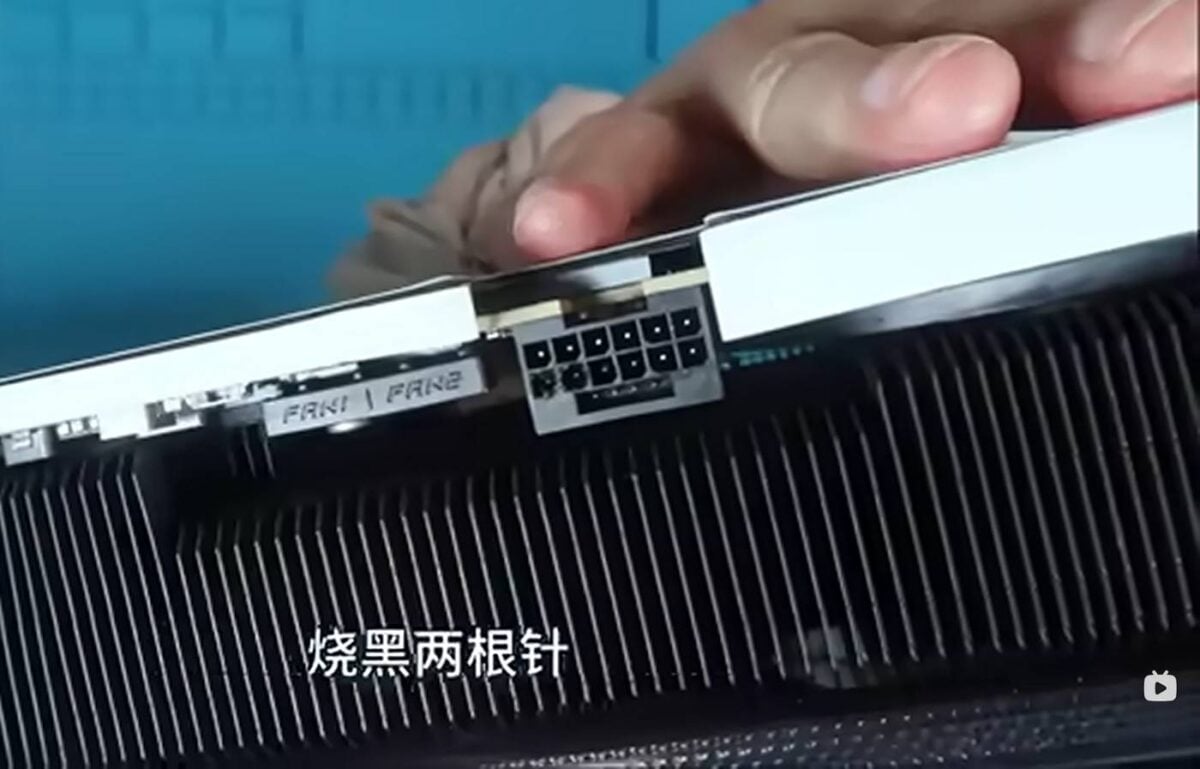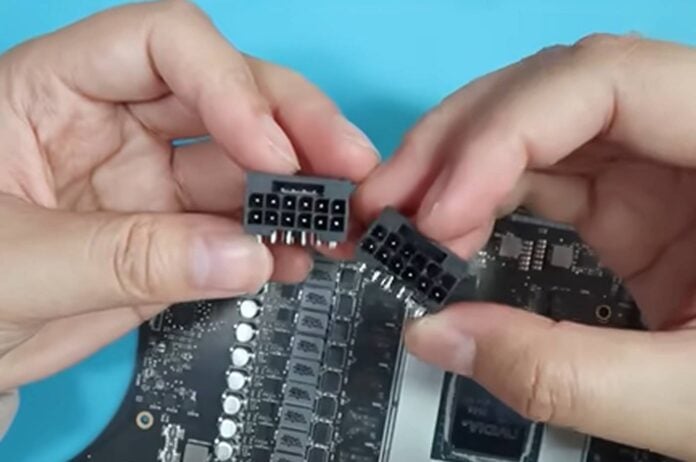A Chinese graphics card repair shop has shared a video on BiliBili showcasing a new type of 12V-2×6 connector featuring thicker contact pins. Whenever a burned card arrives, the technician replaces the damaged connector with this stronger variant in the hope of fixing the issue once and for all. Though we can’t be sure of the effectiveness of such a solution, the logic behind it is correct.
In her latest repair video, the technician replaced a damaged connector on an RTX 5090 Astral with this new version, showing the thickness difference between the old and new header pins. It seems that Asus’ Power Detector+ feature, which provides current readings per power-pin and alerts about unbalanced power distribution, wasn’t enough to save this card from melting.

After reassembling the card, she put it through a long stress test to verify the GPU functionality and the connector temperature, measuring about 44°C while pulling just under 600W through the cable. This temperature is perfectly fine for 24/7 operation, as melting occurs at temperatures far above 100°C. That said, we can’t be sure how much of this is the result of a good connection and how much is due to the thicker pins. Logically, the thicker the pins get, the less heat they should generate at equivalent amperage.
For comparison, the good old 8-pin uses ~1.6mm diameter pins rated for 8 to 10 Amps alongside 16- to 18-gauge wire, while the 12V-2×6 gets ~1.2mm pins rated for 9.2 Amps plus 16-gauge wire. Nevertheless, the 12V-2×6 is rated for 600W while the 8-pin transmits just 150W. This is why the 8-pin connector is so reliable; it was built with a lot of headroom to counteract any improper connection or wear.

Unfortunately, using even thicker pins on the 12V-2×6 won’t be possible without a complete redesign since existing hardware and cables will become incompatible. The replacement connector used by this repair shop is probably at the edge of what is allowed to avoid damaging the PSU cables and causing new, unforeseen issues.
The enterprising technician says that this new connector has fixed the melting issue on a lot of GPUs, regardless of whether the owner uses regular cables or adapters. That said, she advises against using the latter, just to be on the safe side, as they can approach the melting point even after this repair.
Even if this isn’t a permanent fix, at least in theory, it should reduce the risks of burning compared to the original connector design. Thicker pins mean lower electrical resistance, which in turn means less heat generation. Perhaps graphics card manufacturers should give this alternative a closer look. Are you watching, Nvidia?

